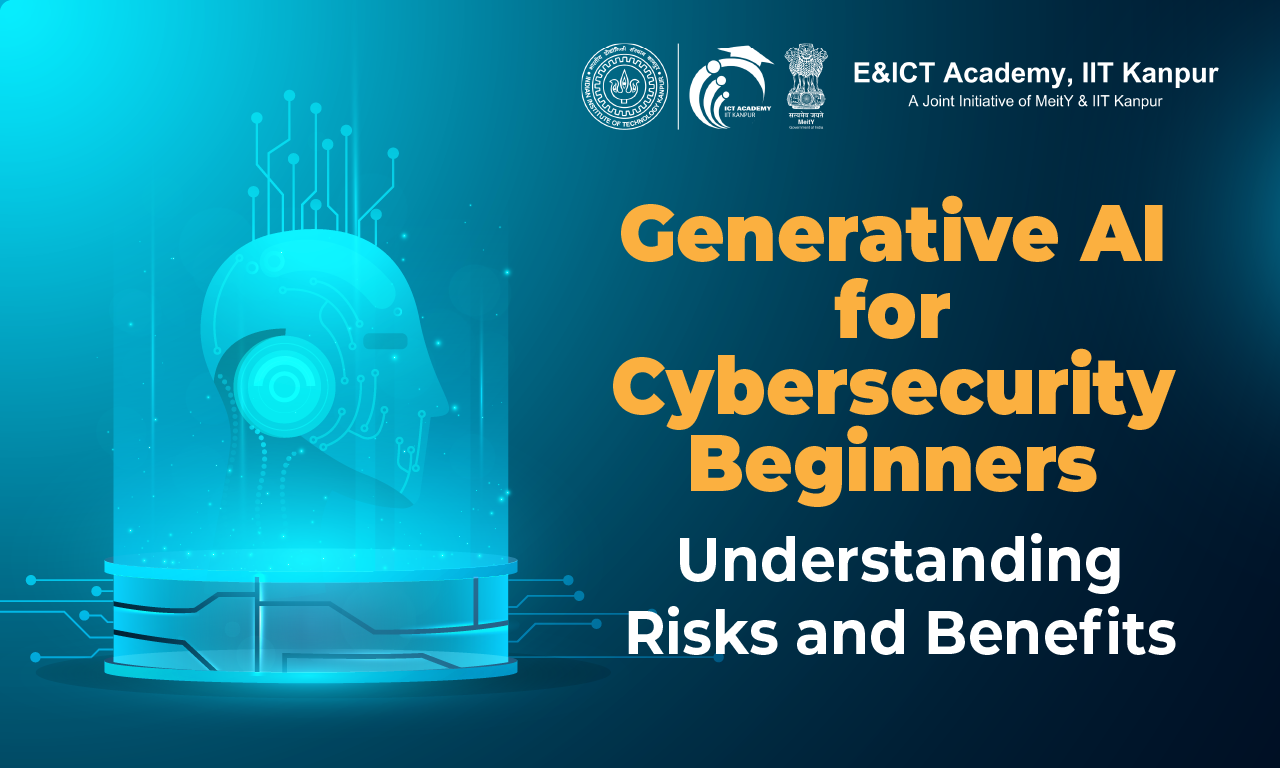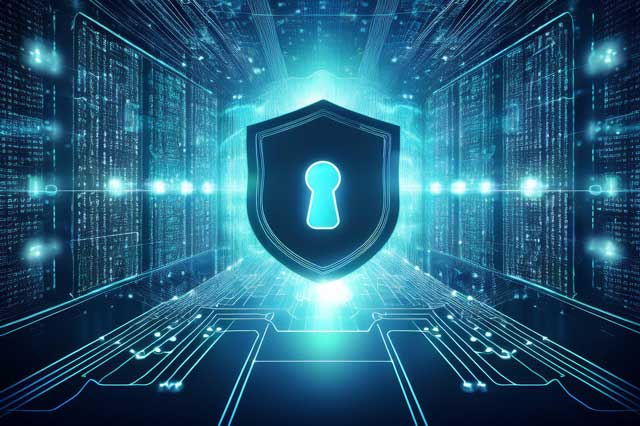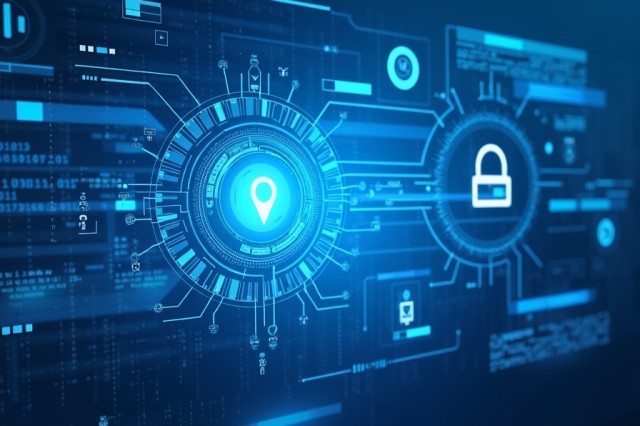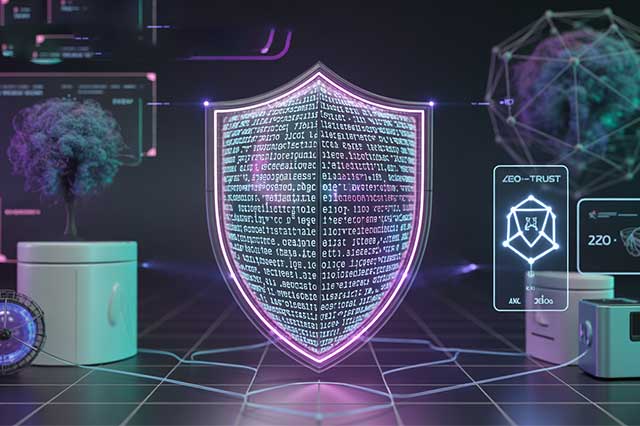Learn How Generative AI is Changing Cybersecurity (Beginner’s Guide 2026): Understanding Risks and Benefits

Generative AI is transforming cybersecurity with automated threat detection, sophisticated response mechanisms, and greater overall security systems. Its new entrants must be aware of its functioning to tap into its advantages while keeping its limitations to a minimum.
AI-driven tools can process vast datasets, identify vulnerabilities, and even simulate cyberattacks to test and refine defensive strategies. On the flip side, malicious players can exploit generative AI to make more sophisticated attacks, like automated hacking and phishing. Due to these two aspects, cybersecurity specialists have to adopt responsible AI approaches.
In this article, we analyze the benefits and risks of using generative AI in cybersecurity and provide beginners with recommendations on how to use it safely.
Must Read: How to Build a Successful Career in Cybersecurity
Best Generative AI Cybersecurity Course
Master the future of cyber defense with the Best Generative AI Cybersecurity Course by EICT Academy, IIT Kanpur. This industry-relevant program blends AI innovation with practical cybersecurity skills to help you detect and respond to threats in real-time. Learn from top IIT experts through hands-on projects, real-world case studies, and interactive sessions. Whether you’re a student or working professional, this course empowers you to lead in the AI-driven cybersecurity era.
| Best Cybersecurity Course | |
|---|---|
| Introduction to Cybercrime | Enroll Now! |
| Ethical Hacking for Beginners | Enroll Now! |
| Introduction to Cryptography | Enroll Now! |
| Introduction to Information Technology | Enroll Now! |
How Generative AI is Used in Cybersecurity
In the cat-and-mouse game of cybersecurity, generative AI is changing the rules entirely by strengthening security controls, threat detection automation, and incident response. The following are the ways to use it:
- Threat Prediction & Detection: AI scans huge data sets for patterns to identify cyberattacks earlier.
- Automated Incident Response: AI-driven technologies reduce damage by establishing real-time reactions to security violations.
- Vulnerability Assessment: AI identifies vulnerabilities in networks and systems and recommends solutions.
- Security Automation: AI makes it more effective by automating routine security processes like firewall updates and log reviews.
- Deepfake & Fraud Detection: Artificial intelligence-based fraud detection detects and marks deepfake-created documents, voices, and videos used in fraud.
Must Read: Cyber Security in AI Era
- Malware Analysis & Prevention: AI studies evolving malware trends to detect and remove new threats in malware analysis and prevention.
- Cyberattack Simulation: Before threats become real, AI simulates attack scenarios to try out and strengthen cybersecurity defenses.
Benefits of Generative AI for Cybersecurity Beginners
With its many advantages, generative AI improves overall security and makes cybersecurity more approachable for novices.
Makes Complicated Cybersecurity Tasks Simpler
Because of its technical sophistication, cybersecurity can be intimidating for novices. Tasks like threat identification, security monitoring, and incident response are made simpler and easier to handle by AI-powered solutions.
Improves Threat Identification and Reaction
AI detects cyber threats more quickly than conventional techniques by continuously scanning networks for questionable activity. By offering automated reactions, it lessens the effect of attacks.
Lowers Human Errors
Human faults, including the utilization of weak passwords or improper security setting configuration, account for most of the cyber breaches. By detecting potential attacks automatically and applying security best practices, AI eliminates such risks.
Offers Up-to-Date Security Insights
Beginners may stay informed about potential vulnerabilities and cyber dangers by using dashboards powered by AI to receive real-time security notifications.
Conserves Resources and Time
Inexperienced cybersecurity teams often do not have the time and the know-how to investigate each possible issue personally. Many procedures are automated by AI, which releases resources to be used on more strategic tasks.
Must Read: Generative AI in Cybersecurity
Enhances Education abd Skill Development
Beginners can better comprehend cyberattacks and response tactics with the use of AI-driven cybersecurity training tools that offer interactive simulations of real-world threats.
Potential Risks and Challenges
Despite its advantages, generative AI also presents risks that beginners should be aware of.
Cyber Threats Driven by AI
AI is being used by cybercriminals, generative AI also presents risks that beginners should be aware of.
- Deepfake Phishing: Artificial intelligence-generated phony voices and movies are used in deepfake phishing to trick people into
- Automated hacking tools: AI-driven bots can quickly take advantage of system flaws, increasing the effectiveness of cyberattacks.
- AI-generated malware: Malicious AI models have the ability to produce new malware that circumvents conventional security measures.
Data Security and Privacy Issues
Large volumes of data are necessary for AI systems to operate, which raises questions about the processing, storage, and security of cybersecurity-related data.
Over-Dependence on AI Systems
Over-reliance on AI in cybersecurity might result in complacency. For AI programs to make accurate decisions and not overlook serious hazards, human oversight is necessary.
Bias and False Positives in AI Models
When lawful behaviors are wrongly flagged as security concerns, AI models may generate biased results or false positives. These errors may cause needless interruptions.
Ethical and Regulation Challenges
Apprehensions regarding whether AI determines on which threats it should act first and how transparency in decision-making can be maintained are some of the ethical considerations arising out of the use of AI in cybersecurity. Laws in many countries are being drafted to prevent the misuse of AI in cybersecurity.
Future of GenAI in Cybersecurity
Future growth in cybersecurity will be heavily driven by generative AI. In the coming years, several growths are expected as follows:
Autonomous AI-Driven Security Systems
AI-driven security systems of the future will be autonomous, detecting and eliminating threats without human intervention. The features of these autonomous learning systems will continue to improve.
Adaptive AI for Evolving Cyberthreats
AI algorithms will become increasingly nimble as cyberattacks evolve, adapting to new attack patterns and developing countermeasures in real-time.
AI-Assisted Fraud Prevention
Companies and financial institutions will adopt AI-powered fraud detection platforms to enhance the identification of fake accounts, detect transactional anomalies, and prevent cyber fraud.
AI-Augmented Cybersecurity Training
AI-generated simulations of cyberattacks and artificial intelligence will transform cybersecurity education by assisting novices and security experts in practicing real-world situations.
Cybersecurity and Ethical AI Regulations
To control the use of AI in cybersecurity and ensure responsible implementation while thwarting hostile applications, governments and industry leaders will create new frameworks and rules.
Identity Verification Enhanced by AI
Hackers will find it more difficult to get around identity verification procedures thanks to generative AI’s strengthening of speech recognition, facial recognition, and biometric identification.
| Related Cybersecurity Articles | |
|---|---|
| Post Quantum Cryptography | Cybersecurity vs Ethical Hacking Attack |
| Disinformation Security | Cybersecurity Salary |
| Cybersecurity Roadmap | Importance of Cybersecurity |
Conclusion
Generative AI is changing cybersecurity by giving powerful tools for automated responses, enhanced security strategies, and threat detection. Its rise, however, comes with complications. Ethical quandaries, data privacy concerns, and the unsettling rise of AI-powered cyberattacks blur the line between innovation and risk.
For cybersecurity professionals, the challenge is twofold: keep pace with AI’s relentless evolution while enforcing ethical safeguards that protect against the very threats the technology enables.
To gain a clearer understanding of AI-based cybersecurity, E&ICT Academy provides instructor-led online courses to assist beginners and professionals alike in gaining a better perspective of the complexities of this field.
Recommended Courses

Advanced Penetration Testing and Exploitation

CISSP - Introduction to Information Security

Cloud Security Practitioner

Computer Hacking Forensic Investigator (CHFI)

Cyber Security

Cyber Security Ethical Hacking

Digital Forensics and Incident Investigation

Ethical Hacking Essentials

Ethical Hacking For Beginners

Gen AI in Cyber Security

Introduction to Cryptography for Beginners

Introduction to Cybercrime

Next-Gen Cyber Security



